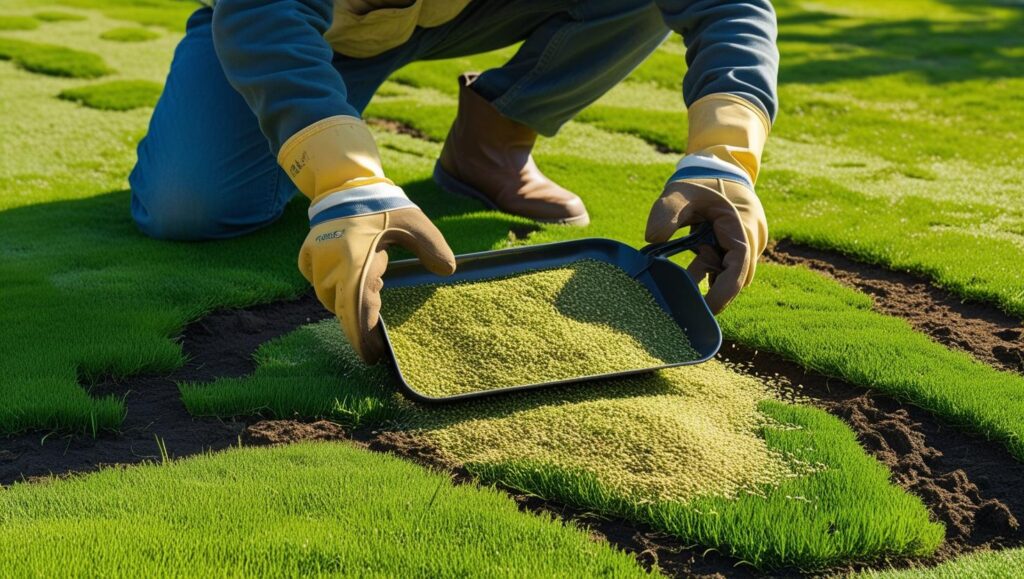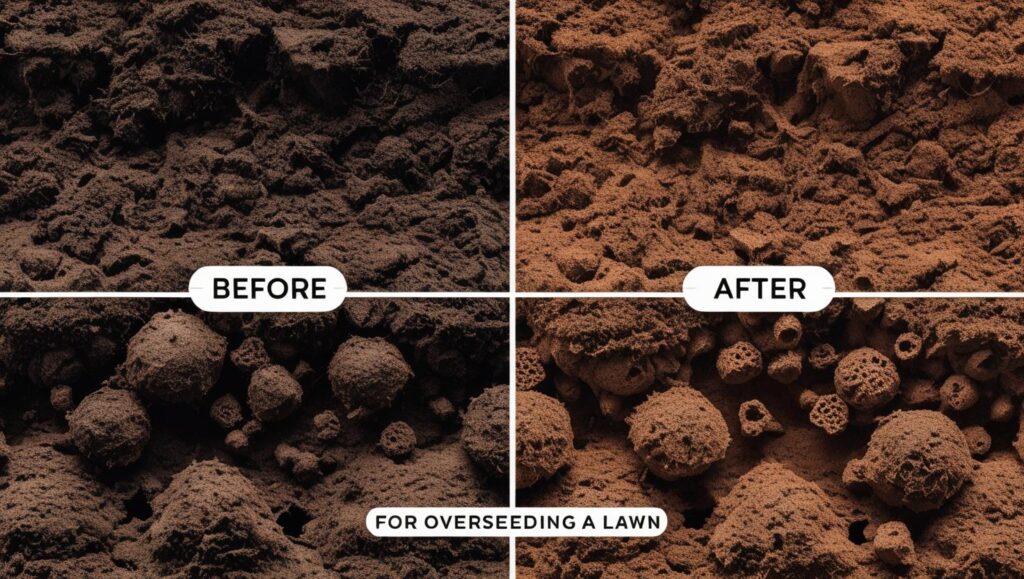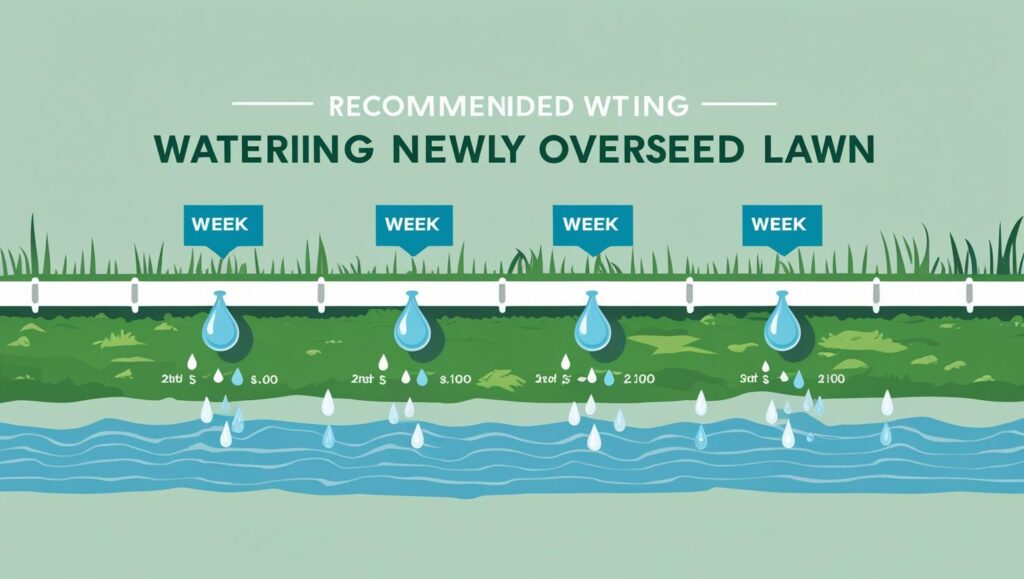Revitalizing a thin, patchy lawn does not require a complete overhaul. For homeowners seeking a denser, more resilient turf, learning how to plant grass seed on an existing lawn a process known as overseeding is a cost-effective and straightforward solution. This guide provides a comprehensive, step-by-step approach, grounded in horticultural best practices, to ensure successful germination and a healthier lawn.

Key Insights for Successful Overseeding
| Key Factor | Detail/Statistic |
| Optimal Timing | Cool-Season Grass: Late summer/early fall (soil 50-65°F). Warm-Season Grass: Late spring/early summer (soil >65°F). |
| Core Preparation | Mow lawn to 1.5-2 inches, dethatch if thatch is over ½ inch thick, and aerate compacted soil. |
| Seed-to-Soil Contact | Considered the most critical factor for germination. Aeration and dethatching are essential to achieve this. |
| Watering Schedule | Water lightly 2-4 times daily for the first two weeks, then transition to deeper, less frequent watering. |
| Fertilizer Type | Use a “starter” fertilizer high in phosphorus to promote strong root development before or during seeding. |
Understanding the “Why”: The Benefits of Overseeding
Over time, lawns can become thin due to foot traffic, environmental stress, pest damage, or simply the natural life cycle of grass. This thinning allows weeds to establish themselves more easily. Overseeding introduces new grass plants that fill in bare or thinning spots, resulting in a denser stand of turf.
Overseeding keeps your lawn competitive and steeped in youth and vigor, without starting over from scratch, advises Pennington Seed, a leading producer of grass seed. A thicker lawn not only looks better but is also more resilient to weeds, insects, and disease.
Timing is Everything: When to Overseed Your Lawn
The success of your overseeding project is highly dependent on timing. Sowing seed during a period of optimal growth for your specific grass type gives the new seedlings the best chance to establish before facing harsh weather.
- For Cool-Season Grasses: This includes varieties like Kentucky bluegrass, perennial ryegrass, and fescues, which are common in northern regions. The ideal time to plant is late summer to early fall. According to the University of Minnesota Extension, this timing allows the seed to germinate in warm soil and establish itself in the cooler air temperatures of autumn, with less competition from weeds. Spring is the second-best option, but young grass may struggle with the summer heat and weed pressure that follows.
- For Warm-Season Grasses: Varieties such as Bermudagrass, Zoysia grass, and St. Augustine grass thrive in southern climates. The best window for overseeding is late spring through early summer. At this time, soil temperatures are consistently above 65°F, which these grasses need for robust germination and growth.
A Step-by-Step Guide: How to Plant Grass Seed on an Existing Lawn
Follow these methodical steps to ensure your new seed thrives. Proper preparation is essential and directly impacts the success rate of germination.
Step 1: Prepare the Existing Lawn
First, prepare the canvas. Your goal is to weaken the existing grass slightly to give the new seeds a fighting chance and to ensure they can reach the soil.
- Mow Low: Cut your lawn shorter than usual, to a height of about 1.5 to 2 inches. This allows sunlight to reach the new seedlings. Bag the clippings to prevent them from creating a barrier over the soil.
- Dethatch: Thatch is a layer of dead grass, roots, and debris that accumulates between the soil surface and the green grass blades. If this layer is more than half an inch thick, it can prevent seeds and water from reaching the soil. Use a dethatching rake or a rented power dethatcher to remove this layer.
Step 2: Aerate the Soil
For lawn repair and growth, roots need oxygen, water, and nutrients. Compacted soil, common in high-traffic areas, restricts all three. Aeration is the process of creating small holes in the soil to alleviate compaction.
Aerating your lawn beforehand improves soil-to-seed contact, which helps the seeds germinate and develop strong root systems, states ABC Home & Commercial Services.
Using a core aerator, which pulls plugs of soil out of the ground, is widely considered more effective than simply spiking the lawn. The holes provide a protected space for seeds to lodge and germinate.

Step 3: Choose the Right Grass Seed
Selecting the correct grass seed is crucial for long-term success. For the most uniform appearance, choose a seed blend that matches your existing lawn. If you’re unsure of your grass type, you can take a small sample to a local garden center for identification. Consider your lawn’s conditions—sun, shade, and use—when selecting a variety. High-quality seed from a reputable brand will have a higher germination rate and be free of weed seeds.
Step 4: Sow the Seed and Fertilize
With the lawn prepped, it’s time to plant.
- Spread the Seed: Use a broadcast or drop spreader to apply the grass seed evenly across the lawn. To ensure uniform coverage, apply half the seed in one direction (e.g., north to south) and the other half in a perpendicular direction (e.g., east to west). Follow the application rate on the seed package.
- Apply Starter Fertilizer: Immediately after seeding, apply a starter fertilizer. These fertilizers are high in phosphorus, a nutrient essential for vigorous root development. “Phosphorus is the most important nutrient for new grass since it helps develop a strong root system and speeds up germination,” explains the team at Lawn Love. Avoid using “weed and feed” products, as the herbicides will prevent your new grass seeds from sprouting.
Step 5: Water Diligently
Consistent moisture is the final, critical element for germination.
- First 1-2 Weeks: The goal is to keep the top inch of soil consistently moist, but not waterlogged. This typically requires light watering one to two times per day.
- After Germination: Once the seedlings have sprouted, you can begin to water less frequently but more deeply. This encourages the roots to grow down into the soil in search of moisture.
After about a month, you can go back to a normal watering schedule, advises The Yard Barbers, a professional lawn care service. “That’s because your seeds should now be fully established in your soil.”

Aftercare: The First Mow and Beyond
Wait until the new grass seedlings have reached a height of at least 3 to 4 inches before mowing for the first time. This ensures their root systems are strong enough to withstand the stress of cutting. Set your mower to its highest setting for the first few mows, and never remove more than one-third of the grass blade at a time.
A properly overseeded lawn will become noticeably thicker within a few weeks and should be well-established before the next season of stress arrives. This annual practice can transform a tired, thinning lawn into a durable and beautiful landscape.
Experts Identify Best Grasses for Erosion Control Amid Worsening Soil Losses
